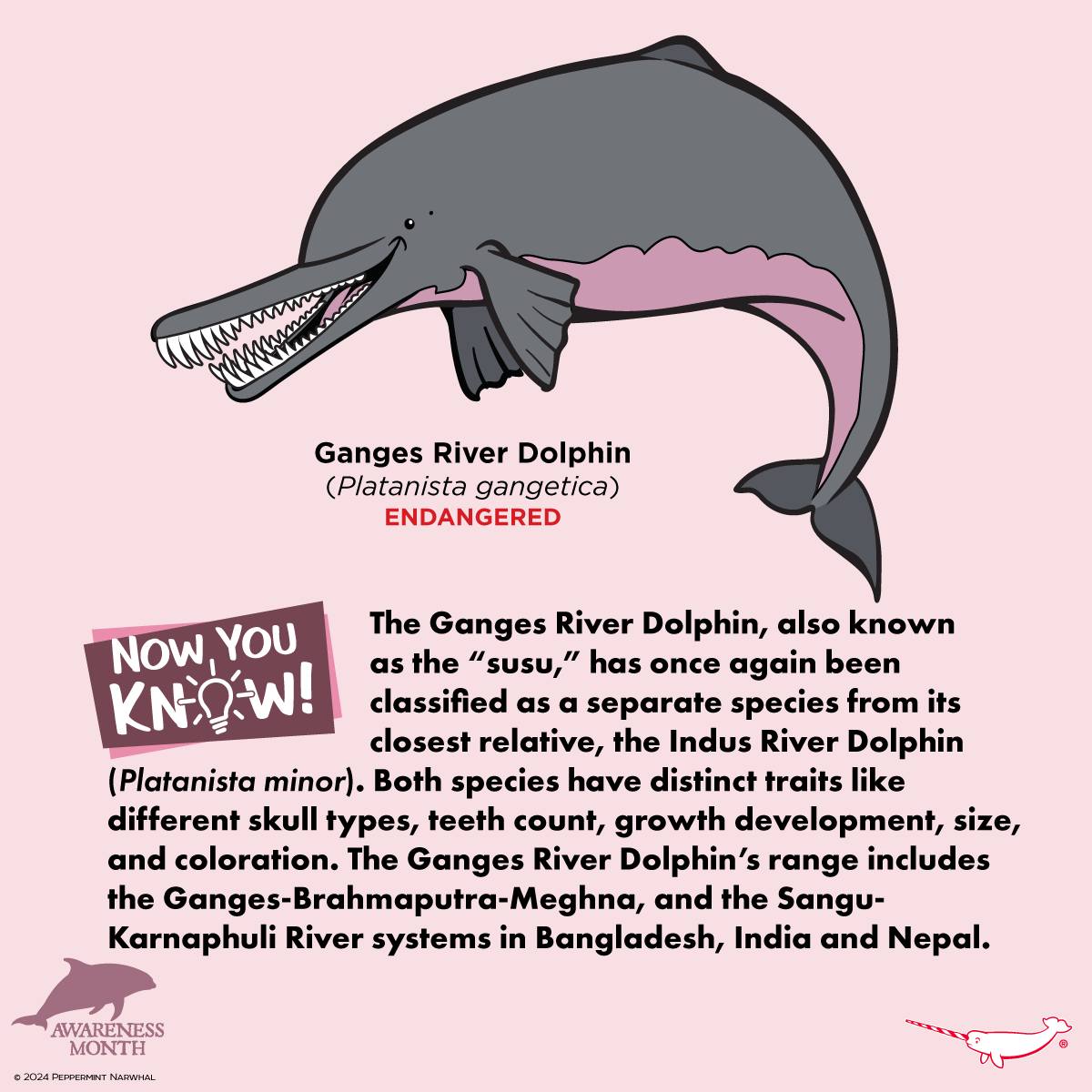– The Ganges River Dolphin’s (Platanista gangetica) physical and behavioral distinctions from its closest relative, the Indus River Dolphin (Platanista minor).
– The habitat and geographical range of the Ganges River Dolphin, emphasizing its presence in the Ganges-Brahmaputra-Meghna and the Sangu-Karnaphuli River systems.
– The conservation status, threats, and efforts to protect the Ganges River Dolphin.
– The significance of the Ganges River Dolphin in the ecosystems of these rivers and the cultural importance it holds in the region.
The Ganges River Dolphin, often affectionately called the “susu” due to the sound it makes when breathing, stands out as a remarkable creature in the aquatic tapestry of South Asia. Distinguished by its long, pointed snout and visible teeth even when its mouth is closed, this dolphin species exhibits several unique features that set it apart from its closest relative, the Indus River Dolphin. Recent studies have reinforced the decision to classify the Ganges River Dolphin as a separate species, highlighting differences such as skull structure, tooth count, growth patterns, size, and coloration.
Found predominantly within the Ganges-Brahmaputra-Meghna and the Sangu-Karnaphuli River systems across Bangladesh, India, and Nepal, the Ganges River Dolphin navigates these murky waters almost entirely blind. Its habitat is characterized by freshwater zones where these majestic creatures rely on echolocation to find their prey, navigate obstacles, and communicate with one another. Unlike many oceanic dolphins with clear, salty water to help their vision, the turbid rivers inhabited by the Ganges River Dolphins require highly refined auditory skills to survive.
The Ganges River Dolphin is currently classified as endangered by the International Union for Conservation of Nature (IUCN), facing many threats that endanger its survival. These include water pollution, habitat destruction due to the construction of dams and irrigation projects, unintentional capture in fishing nets, and direct hunting for their oil and meat. Conservation efforts are underway, with initiatives focusing on habitat restoration, pollution control, and the establishment of protected areas. Education and awareness campaigns are critical to changing local perceptions and behaviors towards these dolphins.
The Ganges River Dolphin’s ecological role is substantial. As apex predators, they help maintain the health of river ecosystems by controlling fish populations and, thus, balancing the food chain. Their presence is an indicator of water quality and biodiversity. On a cultural level, the Ganges River Dolphin holds significant importance in its inhabited regions. Revered in local folklore and considered an omen of good luck, the dolphin is an integral part of these communities’ cultural heritage and spiritual fabric.
Protecting the Ganges River Dolphin goes beyond saving an endangered species; it involves preserving the health of major river ecosystems that millions of people and countless other wildlife species depend on. Conservation strategies must be adapted to address the specific challenges faced in each part of their range, involving local communities to ensure these charismatic creatures continue to navigate the rivers of South Asia for generations to come.
Efforts to conserve the Ganges River Dolphin involve international collaboration, research, and grassroots initiatives. Projects focusing on reducing pollution, enhancing legal protection, creating dolphin-safe fishing practices, and restoring critical habitats are essential. Engaging communities through educational programs encourages stewardship and helps to mitigate conflicts between humans and dolphins.
We must commit to ongoing research to monitor populations, understand their needs, and adapt conservation strategies accordingly to ensure the Ganges River Dolphin thrives. The story of the Ganges River Dolphin is not just a testament to nature’s resilience but also a call to action for humanity to respect and protect the intricate web of life that sustains our planet.
*****
Source Description
Now You Know! – The Ganges River Dolphin (Platanista gangetica), also known�as the “susu,” has once again been classified as a separate species from its closest relative, the Indus River Dolphin (Platanista minor). Both species have distinct traits like different skull types, teeth count, growth development, size, and coloration. The Ganges River Dolphin’s range includes the Ganges-Brahmaputra-Meghna and the Sangu-Karnaphuli River systems in Bangladesh, India and Nepal.
AUDIENCE POLL
Would you like to see the Ganges River Dolphin added to our Dolphin Awareness Pin series? If so, please give this graphic a love. The dolphin that receives the most audience love will be considered for an expansion to the series in 2024.
Shop www.peppermintnarwhal.com

